 Palladam Sanjeeva Rao was the most recognisable flautist who gave the Carnatic flute its stature as a concert worthy instrument. Born in 1884 in Palladam, to Venkobachar a renowned Sanskrit scholar with spiritual healing powers, he had access to music education through his first guru, a Muslim zamindar (landlord) better known as Shatkala Salem Narassaya who could sing in 6 speeds. One other musician who could accomplish this feat is Shatkala Govinda Marar who had impressed Saint Thyagaraja that the latter composed the famous pancharatna krithi Endaro Mahanubavulu in Sree ragam. His tutelage together with his brothers under Sharaba Shastri (the blind prodigy), who first performed Carnatic compositions on the flute began when he moved to Kumbakonam at the age of 12 and trained for seven years with an almost monastic regime by singing and begging food for sustenance. When Sharaba Shastri passed away in 1904, he had already gave his personal flute to Sanjeeva Rao who by the time became his star student. Sanjeeva Rao's discomfort with Flute Mali happened when the latter performed what was seemed as impossible on the flute (using fingering technqiues to imitate the human voice) in the 1930s and dismissed Flute Mali's talent that he was not playing flute but something else. However, within an overnight, Mali's fame reached far and wide and lead to a steady decline in Sanjeeva Rao's concert engagements from the 1940s only to comforted by Flute Mali's unpredictably erratic behaviour. He received the President's Award (1954) and had already received the Sangeetha Kalanidhi (1943). He passed away in 1961 having trained notable flautists like Palladam Nagaraja Rao and Ramachandra Shastry. The noted celebrity classical and film playback singer Prasanna Rao is his grandson.
Palladam Sanjeeva Rao was the most recognisable flautist who gave the Carnatic flute its stature as a concert worthy instrument. Born in 1884 in Palladam, to Venkobachar a renowned Sanskrit scholar with spiritual healing powers, he had access to music education through his first guru, a Muslim zamindar (landlord) better known as Shatkala Salem Narassaya who could sing in 6 speeds. One other musician who could accomplish this feat is Shatkala Govinda Marar who had impressed Saint Thyagaraja that the latter composed the famous pancharatna krithi Endaro Mahanubavulu in Sree ragam. His tutelage together with his brothers under Sharaba Shastri (the blind prodigy), who first performed Carnatic compositions on the flute began when he moved to Kumbakonam at the age of 12 and trained for seven years with an almost monastic regime by singing and begging food for sustenance. When Sharaba Shastri passed away in 1904, he had already gave his personal flute to Sanjeeva Rao who by the time became his star student. Sanjeeva Rao's discomfort with Flute Mali happened when the latter performed what was seemed as impossible on the flute (using fingering technqiues to imitate the human voice) in the 1930s and dismissed Flute Mali's talent that he was not playing flute but something else. However, within an overnight, Mali's fame reached far and wide and lead to a steady decline in Sanjeeva Rao's concert engagements from the 1940s only to comforted by Flute Mali's unpredictably erratic behaviour. He received the President's Award (1954) and had already received the Sangeetha Kalanidhi (1943). He passed away in 1961 having trained notable flautists like Palladam Nagaraja Rao and Ramachandra Shastry. The noted celebrity classical and film playback singer Prasanna Rao is his grandson.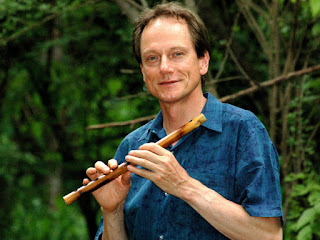 Ludwig Pesch is probably the first European to pursue the study of Carnatic music & flute to a professional level. He was a music student at the University of Freiburg (Germany) & was a recipient of the prestigious Indo-German Cultural Exchange Programme & the DAAD (Deutscher Akademsicher Austausch Dienst). He completed his Diploma Course (First Class) in Carnatic music at Kalakshetra & learnt Carnatic flute under the late Ramachandra Shastry (disciple of Palladam Sanjeeva Rao) for 15 years. He is the co-founder of a major music documentation centre & archive in Chennai, Sampradaya. He had given many lecture demonstrations, solo performances & has also worked with top ranking musicians in India & abroad. He has also initiated Carnatic music rehabilitation projects & special music education on Carnatic music in Germany. He is also the author of several music books including the widely acclaimed "The Illustrated Companion to South Indian Classical Music" the first of its kind in the world for a global audience.
Ludwig Pesch is probably the first European to pursue the study of Carnatic music & flute to a professional level. He was a music student at the University of Freiburg (Germany) & was a recipient of the prestigious Indo-German Cultural Exchange Programme & the DAAD (Deutscher Akademsicher Austausch Dienst). He completed his Diploma Course (First Class) in Carnatic music at Kalakshetra & learnt Carnatic flute under the late Ramachandra Shastry (disciple of Palladam Sanjeeva Rao) for 15 years. He is the co-founder of a major music documentation centre & archive in Chennai, Sampradaya. He had given many lecture demonstrations, solo performances & has also worked with top ranking musicians in India & abroad. He has also initiated Carnatic music rehabilitation projects & special music education on Carnatic music in Germany. He is also the author of several music books including the widely acclaimed "The Illustrated Companion to South Indian Classical Music" the first of its kind in the world for a global audience.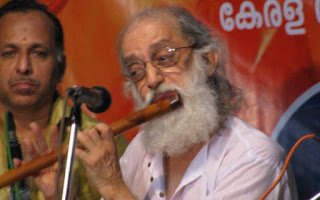 K. S. Gopalakrishnan is one of the most renowned & respected Carnatic flautists from Kerala. His musical talents were noticed right from the age of 9. Nurtured & shaped by his illustrious father Sri. K Shankaranarayana Iyer & later by Sri K. Raghava Varier of Thiruvanthapuram, he started winning accolades from listeners, musicians & musicologists for his brilliant performances from the age of 15. He has been performing all over the country & abroad participating in most other major musical festivals. He is the recipient of numerous awards & titles including the Kerala Sangeetha Nataka Academy award & Veena Sesshanna Memorial National Award. His performances are marked by rich tonal clarity, adherence to sampradaya & a wide repertoire of both varnams & krithis. Well respected by some of the top ranking musicians of India including Chitravina Ravikiran & Dr. N. Ramani, he is also a First Class post-graduate in Economics from Kerala University. Till 2006, he was a staff artist of All-India-Radio Thiruvanthapuram. Contributed by (Abhiram Soori)
K. S. Gopalakrishnan is one of the most renowned & respected Carnatic flautists from Kerala. His musical talents were noticed right from the age of 9. Nurtured & shaped by his illustrious father Sri. K Shankaranarayana Iyer & later by Sri K. Raghava Varier of Thiruvanthapuram, he started winning accolades from listeners, musicians & musicologists for his brilliant performances from the age of 15. He has been performing all over the country & abroad participating in most other major musical festivals. He is the recipient of numerous awards & titles including the Kerala Sangeetha Nataka Academy award & Veena Sesshanna Memorial National Award. His performances are marked by rich tonal clarity, adherence to sampradaya & a wide repertoire of both varnams & krithis. Well respected by some of the top ranking musicians of India including Chitravina Ravikiran & Dr. N. Ramani, he is also a First Class post-graduate in Economics from Kerala University. Till 2006, he was a staff artist of All-India-Radio Thiruvanthapuram. Contributed by (Abhiram Soori)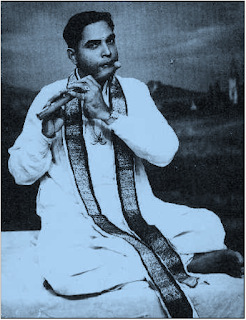 K. S. Narayanan is one of the prime disciples of Flute Mali and though he was in the Indian government service before taking up flute full time, he was one of the country's recognised ambassadors of the Mali's brand of flute playing. As quoted by the Hindu in 2003 when he passed away that year, "though his career as not characterised by a meteoric rise to fame, qualified by brilliant flashes of erudition or genius, or flamboyance and charisma. It resembled rather the gentle brook flowing by the countryside rippling merrily along projecting an air of unsullied abandon without the slightest concern for pleasing anybody, or for that matter, unconcern or discourtesy.". He opted for music as a prospective career option as early as the age of 15 and gave up the family's career tradition of becoming an advocate. In terms of his competence in flute playing, his blowing power and melodic quality was equally compared to that of Flute Mali himself. He also achieved considerable success as head of the music production team at the AIR Tiruchy station through the production of innovative documentary serials of past maestros and for his versatile contributions to classical and light music production.
K. S. Narayanan is one of the prime disciples of Flute Mali and though he was in the Indian government service before taking up flute full time, he was one of the country's recognised ambassadors of the Mali's brand of flute playing. As quoted by the Hindu in 2003 when he passed away that year, "though his career as not characterised by a meteoric rise to fame, qualified by brilliant flashes of erudition or genius, or flamboyance and charisma. It resembled rather the gentle brook flowing by the countryside rippling merrily along projecting an air of unsullied abandon without the slightest concern for pleasing anybody, or for that matter, unconcern or discourtesy.". He opted for music as a prospective career option as early as the age of 15 and gave up the family's career tradition of becoming an advocate. In terms of his competence in flute playing, his blowing power and melodic quality was equally compared to that of Flute Mali himself. He also achieved considerable success as head of the music production team at the AIR Tiruchy station through the production of innovative documentary serials of past maestros and for his versatile contributions to classical and light music production.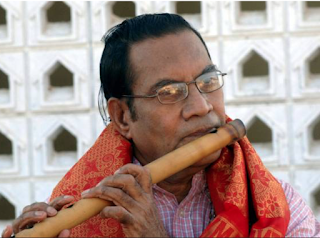 Dr. Prapancham Sitaram was probably the most multi-faceted of Flute Mali's students who despite being an accomplished flautist was also an administrator, musicologist and an academician. As an administrator, he had served as Station Director, Chief Producer and Director of Programmes in the IBS cadre, AIR, controlling broadcasts throughout India. As an academician, he was an expert member in the UGC and retains his association with various universities in Hyderabad, Mysore, Delhi and Madras. As a musicologist, he got his doctorate from the University of Bangalore by tracing the evolution of the flute and had been a doctoral advisor for PhD students. Hailed as a prodigy, he could play varnams and kritis at the age of 5. He received instruction from leading Carnatic vocal maestros such as Dr M. Balamuralikrishna, Sandhyavandanam Srinivasa Rao and violinist Annavarappu Ramasamy. Hailing from the direct shishya parampara of Saint Thyagaraja. His father and Dr. M. Balamuralikrishna studied music together with Parupalli Ramakrishna Panthulu (4th direct disciplic succession of Thyagaraja). He was adverse against the concept of "fusion music" and advocated the wholesome quality of culturally pure music and insisted that all instrumentalists must learn vocal music for better grasping of the literary richness of the music. He encouraged the first literary documentation of the flute designs as specified in the ancient Tamil text "Silapathikaram" and the use of the Harikhamboji raga as the base for flute designs. The famous flautist Balasai was his discple.
Dr. Prapancham Sitaram was probably the most multi-faceted of Flute Mali's students who despite being an accomplished flautist was also an administrator, musicologist and an academician. As an administrator, he had served as Station Director, Chief Producer and Director of Programmes in the IBS cadre, AIR, controlling broadcasts throughout India. As an academician, he was an expert member in the UGC and retains his association with various universities in Hyderabad, Mysore, Delhi and Madras. As a musicologist, he got his doctorate from the University of Bangalore by tracing the evolution of the flute and had been a doctoral advisor for PhD students. Hailed as a prodigy, he could play varnams and kritis at the age of 5. He received instruction from leading Carnatic vocal maestros such as Dr M. Balamuralikrishna, Sandhyavandanam Srinivasa Rao and violinist Annavarappu Ramasamy. Hailing from the direct shishya parampara of Saint Thyagaraja. His father and Dr. M. Balamuralikrishna studied music together with Parupalli Ramakrishna Panthulu (4th direct disciplic succession of Thyagaraja). He was adverse against the concept of "fusion music" and advocated the wholesome quality of culturally pure music and insisted that all instrumentalists must learn vocal music for better grasping of the literary richness of the music. He encouraged the first literary documentation of the flute designs as specified in the ancient Tamil text "Silapathikaram" and the use of the Harikhamboji raga as the base for flute designs. The famous flautist Balasai was his discple.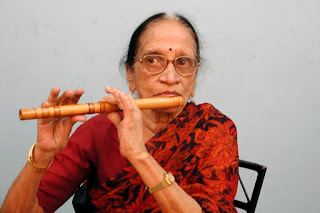 N. Kesi was Flute Mali's only female disciple and also accompanied Flute Mali in his public concerts. As a trained vocalist prior to her switch to the flute, she also continued to receive advanced training under the vocal maestro T. Brinda. Among her notable accomplishments was that she was the first female Carnatic flautist to have performed in AIR and was an A grade artist of both AIR and Doordarsahan. She performed in many countries including UK, France, Rome, Switzerland, Bulgaria, Yugoslavia, Germany, Sri Lanka, the Netherlands, Romania, and Italy. She had also played in the orchestras for the dance recitals of the Bharatanatyam legend Rukmani Devi Arundale and Kumari Kamala. Big names like HMV and Sangeetha also released her music. She was honoured with the Kalaimamani award (1972), Kaamakotti Asthana Vidwan (1996) and the Sangeet Natak Academy award (1997). Until her passing in 2015, she was a visiting professor in the Tamilnadu Government Music College and had been the judge for several Carnatic music competitions in AIR. The Singapore-based flautist, G Sridhar is one of her notable students.
N. Kesi was Flute Mali's only female disciple and also accompanied Flute Mali in his public concerts. As a trained vocalist prior to her switch to the flute, she also continued to receive advanced training under the vocal maestro T. Brinda. Among her notable accomplishments was that she was the first female Carnatic flautist to have performed in AIR and was an A grade artist of both AIR and Doordarsahan. She performed in many countries including UK, France, Rome, Switzerland, Bulgaria, Yugoslavia, Germany, Sri Lanka, the Netherlands, Romania, and Italy. She had also played in the orchestras for the dance recitals of the Bharatanatyam legend Rukmani Devi Arundale and Kumari Kamala. Big names like HMV and Sangeetha also released her music. She was honoured with the Kalaimamani award (1972), Kaamakotti Asthana Vidwan (1996) and the Sangeet Natak Academy award (1997). Until her passing in 2015, she was a visiting professor in the Tamilnadu Government Music College and had been the judge for several Carnatic music competitions in AIR. The Singapore-based flautist, G Sridhar is one of her notable students. Tirupamburam Swaminatha Pillai was an extremely accomplished flautist who had commanded almost equal respect with the legendary Flute Mali where the latter had even praised the former's talent. He had independently developed the vocal techniques that were later re-discovered and popularised by Flute Mali. The hard-hitting Veena Dhanammal herself was full of praise of his talent and both of them practiced many a times in enriching their musical acumen. Of particular mention is Swaminatha Pillai's authority of Muthuswami Dikshitar compositions which was second to none and despite hailing from a family of Nadeswaram musicians, he took to the flute from an early age while continuing to learn vocal music until his voice broke. His father Natarajansundaram Pillai was the first musician to publish the notation of Muthuswami Dikshitar's compositions in Tamil. Swaminatha Pillai himself set to tune the compositions of Muthu Thandavar's krithis when he was a professor and the Head of the Music Department at the Annamalai University between 1942 to 1947. He was adept in all the 72 parent scales of the Carnatic music system and being an advocate of the Dikshitar school of music, he delved in the Vilambakala (slow tempo) and strong gamaka (vocal inflections) in his music. He popularised many of Dikshitar's rare and exquisite compositions including the chaturdasha rAgamAlikA, srI vishvanAtham and the Navaroj raga kriti hastivadanAya namasthubyam. He also mastered the technically challenging ashtottara shata ragatalamalika composition of Ramaswami Dikshitar consisting of 108 ragas and 108 talas in a single composition and taught it to deserving students. Among the many awards that he received, he was awarded both the Sangeetha Kalanidhi (1953) and the Sangeet Natak Academy (1961) in which year he breathed his last. Some of his well known disciples include Prof. S. R. Janakiraman and flautist T. Viswanathan (grandson of Veena Dhanammal).
Tirupamburam Swaminatha Pillai was an extremely accomplished flautist who had commanded almost equal respect with the legendary Flute Mali where the latter had even praised the former's talent. He had independently developed the vocal techniques that were later re-discovered and popularised by Flute Mali. The hard-hitting Veena Dhanammal herself was full of praise of his talent and both of them practiced many a times in enriching their musical acumen. Of particular mention is Swaminatha Pillai's authority of Muthuswami Dikshitar compositions which was second to none and despite hailing from a family of Nadeswaram musicians, he took to the flute from an early age while continuing to learn vocal music until his voice broke. His father Natarajansundaram Pillai was the first musician to publish the notation of Muthuswami Dikshitar's compositions in Tamil. Swaminatha Pillai himself set to tune the compositions of Muthu Thandavar's krithis when he was a professor and the Head of the Music Department at the Annamalai University between 1942 to 1947. He was adept in all the 72 parent scales of the Carnatic music system and being an advocate of the Dikshitar school of music, he delved in the Vilambakala (slow tempo) and strong gamaka (vocal inflections) in his music. He popularised many of Dikshitar's rare and exquisite compositions including the chaturdasha rAgamAlikA, srI vishvanAtham and the Navaroj raga kriti hastivadanAya namasthubyam. He also mastered the technically challenging ashtottara shata ragatalamalika composition of Ramaswami Dikshitar consisting of 108 ragas and 108 talas in a single composition and taught it to deserving students. Among the many awards that he received, he was awarded both the Sangeetha Kalanidhi (1953) and the Sangeet Natak Academy (1961) in which year he breathed his last. Some of his well known disciples include Prof. S. R. Janakiraman and flautist T. Viswanathan (grandson of Veena Dhanammal).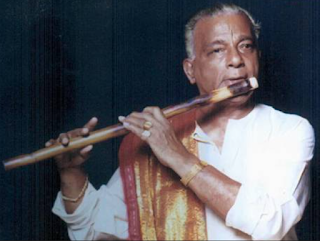 T. S. Sankaran was one of the foremost disciples of Flute Mali and even more than that, a disciple who is very close to Flute Mali's heart. Flute Mali had once written, in the form of a letter to his disciple, about the 16 good qualities that a person should possess. After listing these qualities, he ended the letter abruptly stating, “you are that true human being, for all these qualities are encompassed in you”. His father, T.N. Sambasiva Iyer, was also a renowned flute player, who was the asthana vidwan (court musician) of the Mysore palace for several years and had planned for a career for his son right from the start and started training him in flute-playing techniques. Sankaran also learned vocal music from Vedaranyam Ramachandra Iyer. His great grandfather Sathanur Panchanatha Iyer was an authority in Muthuswami Dikshitar kritis and was also one of the guru’s of Veenai Dhanammal. As early as the age of nine, he started performing concerts in temples and around his village, Sathanur, a hamlet near Kumbakonam. He was an ardent fan of the famed Nageswaram (double-reed aerophone) maestro T. N. Rajarathnam Pillai (TNR) just like the gigantic stalwarts of his day like G. N. Balasubramaniam and Semmangudi Srinivasa Iyer and would unfailingly attend the legendary maestro's concerts. He was also inspired to take up the viraladi (finger-tapping) skill of the Nageswaram used by TNR. In 1948, he joined the AIR station in Tiruchy and later left to learn under Flute Mali. During his time in Chennai, he was also involved in the thematic dance productions by Kalakshetra under the direction of the legendary danseuse Rukmini Devi Arundale who popularised the modern form of Bharatanatyam. He also accompanied legendary dancers like Mrinalini Sarabhai (wife of Vikram Sarabhai, founder of the Indian Space Programme) and Sonal Man Singh on world tours despite being a reputed globetrotting soloist. Such was his devotion to Flute Mali that the latter even bequeathed his assets in a will to his dear student which he unhesitantly destroyed. A down to earth person, he was a man above caste, creed, race and was always willing to teach the poor. He died in 2015 at the age of 85 due to age-related ailments. His grandson J A Jayanth is a fast-rising Carnatic flautist.
T. S. Sankaran was one of the foremost disciples of Flute Mali and even more than that, a disciple who is very close to Flute Mali's heart. Flute Mali had once written, in the form of a letter to his disciple, about the 16 good qualities that a person should possess. After listing these qualities, he ended the letter abruptly stating, “you are that true human being, for all these qualities are encompassed in you”. His father, T.N. Sambasiva Iyer, was also a renowned flute player, who was the asthana vidwan (court musician) of the Mysore palace for several years and had planned for a career for his son right from the start and started training him in flute-playing techniques. Sankaran also learned vocal music from Vedaranyam Ramachandra Iyer. His great grandfather Sathanur Panchanatha Iyer was an authority in Muthuswami Dikshitar kritis and was also one of the guru’s of Veenai Dhanammal. As early as the age of nine, he started performing concerts in temples and around his village, Sathanur, a hamlet near Kumbakonam. He was an ardent fan of the famed Nageswaram (double-reed aerophone) maestro T. N. Rajarathnam Pillai (TNR) just like the gigantic stalwarts of his day like G. N. Balasubramaniam and Semmangudi Srinivasa Iyer and would unfailingly attend the legendary maestro's concerts. He was also inspired to take up the viraladi (finger-tapping) skill of the Nageswaram used by TNR. In 1948, he joined the AIR station in Tiruchy and later left to learn under Flute Mali. During his time in Chennai, he was also involved in the thematic dance productions by Kalakshetra under the direction of the legendary danseuse Rukmini Devi Arundale who popularised the modern form of Bharatanatyam. He also accompanied legendary dancers like Mrinalini Sarabhai (wife of Vikram Sarabhai, founder of the Indian Space Programme) and Sonal Man Singh on world tours despite being a reputed globetrotting soloist. Such was his devotion to Flute Mali that the latter even bequeathed his assets in a will to his dear student which he unhesitantly destroyed. A down to earth person, he was a man above caste, creed, race and was always willing to teach the poor. He died in 2015 at the age of 85 due to age-related ailments. His grandson J A Jayanth is a fast-rising Carnatic flautist. B. N. Suresh was one of the Flute Mali's most talented students and possessed such a calibre that Mali himself had once said that "It is only Suresh who can and will carry my mantle. None else has the capacity”. A comment that was made after Suresh made his debut unrehearsed performance in 1955 with a 29 year old Flute Mali at the age of only nine years. Born in 1946 in Bangalore, he was enamoured with the music of Flute Mali that he only demanded to play in the Mali style. After hearing the boy in Bangalore, Flute Mali himself wanted to personally tutor the boy but was unable since he was based in Chennai and put him under the training of B Sivaramaiah in Bangalore. When he was eleven years of age, he already started performing the most difficult Viriboni varnam in vilamba and tisra kala speeds and had the ready accompaniment of world-renowned stalwarts like Lalgudi Jayaraman, Umayalpuram Sivaraman and M. S. Gopalakrishnan. At the age of 14, he was invited by M.S. Subbulakshmi to provide a two-hour private concert with sitar maestro Pandit Ravi Shankar and after hearing his recital, the Nightingale of Indian classical music remarked "I felt as if the Lord Himself was playing His divine tunes". He was graded as an A-Top artist in AIR and his career peaked in the 1960s and 1970s. Suresh was famous for his handling of raagas such as Keeravani, Simhendramadhyama, Shuddha Saveri and Hemavati. He was also concerned about evolving a musical style called the ‘Bharatiya’, a concept that was later propunded by vocalist Dr. M. Balamuralikrishna of blending the best of the Carnatic and Hindustani styles. He experimented by playing Hindustani tunes on a high-pitched Carnatic flute and vice versa. He was fond of playing devaranaamas popularized by the vocal legend M L Vasanthakumari in those days that he began starting his concerts with a devaranaama, a deviation from the norm. In early 1983, Suresh had a tragic fall right after having a nice oil bath at his house, which was also a fall in his career as a flautist as he was unable to sit on the platform for the rest of his life and though for a time he sat on wheelchair, critics took it very hard on him and he had to use a modified chair to sit on stage with a painful hip pain that took days to recover after every concert. In April 1990, Suresh suffered yet another fracture in his left arm. He gave his last performance in Mysore on June 29th 1990 and did a small concert tour of Andhra Pradesh. He suddenly fell ill in September and breathed his last on 7th October 1990 at the age of 44.
B. N. Suresh was one of the Flute Mali's most talented students and possessed such a calibre that Mali himself had once said that "It is only Suresh who can and will carry my mantle. None else has the capacity”. A comment that was made after Suresh made his debut unrehearsed performance in 1955 with a 29 year old Flute Mali at the age of only nine years. Born in 1946 in Bangalore, he was enamoured with the music of Flute Mali that he only demanded to play in the Mali style. After hearing the boy in Bangalore, Flute Mali himself wanted to personally tutor the boy but was unable since he was based in Chennai and put him under the training of B Sivaramaiah in Bangalore. When he was eleven years of age, he already started performing the most difficult Viriboni varnam in vilamba and tisra kala speeds and had the ready accompaniment of world-renowned stalwarts like Lalgudi Jayaraman, Umayalpuram Sivaraman and M. S. Gopalakrishnan. At the age of 14, he was invited by M.S. Subbulakshmi to provide a two-hour private concert with sitar maestro Pandit Ravi Shankar and after hearing his recital, the Nightingale of Indian classical music remarked "I felt as if the Lord Himself was playing His divine tunes". He was graded as an A-Top artist in AIR and his career peaked in the 1960s and 1970s. Suresh was famous for his handling of raagas such as Keeravani, Simhendramadhyama, Shuddha Saveri and Hemavati. He was also concerned about evolving a musical style called the ‘Bharatiya’, a concept that was later propunded by vocalist Dr. M. Balamuralikrishna of blending the best of the Carnatic and Hindustani styles. He experimented by playing Hindustani tunes on a high-pitched Carnatic flute and vice versa. He was fond of playing devaranaamas popularized by the vocal legend M L Vasanthakumari in those days that he began starting his concerts with a devaranaama, a deviation from the norm. In early 1983, Suresh had a tragic fall right after having a nice oil bath at his house, which was also a fall in his career as a flautist as he was unable to sit on the platform for the rest of his life and though for a time he sat on wheelchair, critics took it very hard on him and he had to use a modified chair to sit on stage with a painful hip pain that took days to recover after every concert. In April 1990, Suresh suffered yet another fracture in his left arm. He gave his last performance in Mysore on June 29th 1990 and did a small concert tour of Andhra Pradesh. He suddenly fell ill in September and breathed his last on 7th October 1990 at the age of 44. T. Viswanathan was probably the best known disciple of the flute maestro Tirupamburam Swaminatha Pillai and had a very successful career both in India and abroad. Born in 1927 and hailing from a illustrious family in the performing arts, his initiation to music began at a very young age. His grandmother was none other than the Veena Dhanammal who had also practiced music with his guru Swaminatha Pillai. His sister T Balasaraswathi, songstress-cum-danseuse was regarded as one of the all time great Bharatnatyam dancers who is only second to Rukmini Devi and the legendary Bharatanatyam dance master Meenatchi Sundaram Pillai. He studied ethnomusicology at UCLA on a Fulbright scholarship from 1958 to 1960, and was head of the Department of Music at Madras University from 1961 to 1966. He taught at UCLA, California Institute of the Arts, and Wesleyan University, where he was a member of the music faculty since earning his Ph.D. in 1975. In 1976 Viswanathan and his brother T. Ranganathan (Wesleyan's first Artist in Residence in Music) recorded the musical accompaniment for "Bala," a film on the life of their sister, produced and directed by Satyajit Ray. Other recordings by Viswanathan include "South Indian Flute" (World Pacific), "Pallavi" (Nonesuch Explorer Series), "South Indian Classical Flute," (JVC), and "Tribute" (V.G. Arts). Among the many awards that he received included the Sangeet Natak Academy (1987), the Sangeetha Kalanidhi (1989) and the National Endowment for the Arts by the US government (1992). He also attempted to write the gamakas in Carnatic music in a specialised notation form so that learners could understand where the nuances occur without making mistakes but which was not successful. He died in Conntecticut in 2002 after an illustrious career as a performer and a teacher in both Carnatic vocal and flute music.
T. Viswanathan was probably the best known disciple of the flute maestro Tirupamburam Swaminatha Pillai and had a very successful career both in India and abroad. Born in 1927 and hailing from a illustrious family in the performing arts, his initiation to music began at a very young age. His grandmother was none other than the Veena Dhanammal who had also practiced music with his guru Swaminatha Pillai. His sister T Balasaraswathi, songstress-cum-danseuse was regarded as one of the all time great Bharatnatyam dancers who is only second to Rukmini Devi and the legendary Bharatanatyam dance master Meenatchi Sundaram Pillai. He studied ethnomusicology at UCLA on a Fulbright scholarship from 1958 to 1960, and was head of the Department of Music at Madras University from 1961 to 1966. He taught at UCLA, California Institute of the Arts, and Wesleyan University, where he was a member of the music faculty since earning his Ph.D. in 1975. In 1976 Viswanathan and his brother T. Ranganathan (Wesleyan's first Artist in Residence in Music) recorded the musical accompaniment for "Bala," a film on the life of their sister, produced and directed by Satyajit Ray. Other recordings by Viswanathan include "South Indian Flute" (World Pacific), "Pallavi" (Nonesuch Explorer Series), "South Indian Classical Flute," (JVC), and "Tribute" (V.G. Arts). Among the many awards that he received included the Sangeet Natak Academy (1987), the Sangeetha Kalanidhi (1989) and the National Endowment for the Arts by the US government (1992). He also attempted to write the gamakas in Carnatic music in a specialised notation form so that learners could understand where the nuances occur without making mistakes but which was not successful. He died in Conntecticut in 2002 after an illustrious career as a performer and a teacher in both Carnatic vocal and flute music. B. M. Sundar Rao, one of the last surviving disciples of Flute Mali (the other being B Shankar Rao) as of 2017 (aged 80). Based in Bangalore, he has also won the Karnataka Kalashri award in 2001. In his hey days, he performed not only in concert circuits in India but also in Dubai, France, Geneva, Netherlands, UK and other countries. He had also performed with Hariprasad Chaurasia in Paris in 1964 and the greatest Mridangam artiste of all time, Phalgat Mani Iyer in 1968. He had also accompanied his own guru in numerous concerts. Being trained in both vocal, flute and also the violin, he had trained up to 4000 students in Carnatic music. He currently trains students in Bangalore at free of cost. Despite having an ailing son with cardiac problems, he is only living with a livelihood of about 6000 Rp a month. He also conducts a 3 month workshop on a piece of land donated by his brother in 1971. Earlier known as Ramakrishna Bhajana Mandali for conducting Bhajans, it was later renamed as T R Mahalingam Memorial School of Music in 1986. Also trained as a flute maker, he procures bamboo from Tamil Nadu and Kerala by spending money from his pocket and distributes the instruments free of cost to his students as he firmly believes in the motto ‘art for art sake.’ He can be contacted at: +91-9448311418, +91-8762277405.
B. M. Sundar Rao, one of the last surviving disciples of Flute Mali (the other being B Shankar Rao) as of 2017 (aged 80). Based in Bangalore, he has also won the Karnataka Kalashri award in 2001. In his hey days, he performed not only in concert circuits in India but also in Dubai, France, Geneva, Netherlands, UK and other countries. He had also performed with Hariprasad Chaurasia in Paris in 1964 and the greatest Mridangam artiste of all time, Phalgat Mani Iyer in 1968. He had also accompanied his own guru in numerous concerts. Being trained in both vocal, flute and also the violin, he had trained up to 4000 students in Carnatic music. He currently trains students in Bangalore at free of cost. Despite having an ailing son with cardiac problems, he is only living with a livelihood of about 6000 Rp a month. He also conducts a 3 month workshop on a piece of land donated by his brother in 1971. Earlier known as Ramakrishna Bhajana Mandali for conducting Bhajans, it was later renamed as T R Mahalingam Memorial School of Music in 1986. Also trained as a flute maker, he procures bamboo from Tamil Nadu and Kerala by spending money from his pocket and distributes the instruments free of cost to his students as he firmly believes in the motto ‘art for art sake.’ He can be contacted at: +91-9448311418, +91-8762277405. B. Shankar Rao, the oldest surviving disciple of Flute Mali aged 96 as of 2017 is a performer par excellence even at this advanced age. He teaches some students at his place in Bangalore. He had also won the prestigious Rajyostava award from the government of Karnataka for his services towards music. Though he was a full-time postmaster in the Indian government service previously, he also runs a music institution called "Prapancha". He had given numerous concert performances in India and abroad. Apart from teaching music and giving concerts he is also actively involved in research collaboration with Divakars Speciality Hospital in Bangalore aimed at studying the influence of carnatic music on human health. In 2017 he was conferred the 'Vayoshrestha Sammaan' award by the President of India. Contributed by Sri B. S. Srinivas (son of Sri B. Shankar Rao)
B. Shankar Rao, the oldest surviving disciple of Flute Mali aged 96 as of 2017 is a performer par excellence even at this advanced age. He teaches some students at his place in Bangalore. He had also won the prestigious Rajyostava award from the government of Karnataka for his services towards music. Though he was a full-time postmaster in the Indian government service previously, he also runs a music institution called "Prapancha". He had given numerous concert performances in India and abroad. Apart from teaching music and giving concerts he is also actively involved in research collaboration with Divakars Speciality Hospital in Bangalore aimed at studying the influence of carnatic music on human health. In 2017 he was conferred the 'Vayoshrestha Sammaan' award by the President of India. Contributed by Sri B. S. Srinivas (son of Sri B. Shankar Rao)  Shashank Subramanyam is one of the most prodigious flautists in the world and arguably the greatest living Carnatic flautist today. Born as a child prodigy to Subramanyam, a biochemistry professor and a disciple of Dindugal S P Natarajan (the direct disciple of Flute Mali), his father introduced to him the basics of flute playing after he realising that by the age of 2 Shashank was able to identify all the 72 melakartha ragas. He then took to the flute at the age of 6 in 1984 and by 1990 he was performing in the top concert circuits in both India and abroad. His career-defining moment came when the Music Academy invited Shashank, just 12 years old, to perform in the senior most performance slot "SADAS concert" at The Music Academy, Chennai 1 January 1991, a record that is yet to be broken. Adept in all the 72 melakartha ragas of the Carnatic system, he is an A-Top AIR and Doordarshan artiste and has given over 2000 concerts. He has released over 65CDs and 6 DVDs of music albums and videos. He has performed in most of the world's leading major music festivals, before the royalties of Europe, the most prestigious music venues and had collaborated with some of the leading Jazz bands and musicians in the United States and Europe. His greatest contribution to the Carnatic flute was the introduction of the transposed fingering technique and the use of the double octave blowing technique in his performances. Self-taught in his flute training, his training with vocal maestros R K Srikantan and Palghat K V Narayanaswamy together with percussion masters such as Tiruchur Narendran and Karaikkudi Mani provided him with the necessary grounding to bring out the best of the Carnatic vocal form on the flute. Being a student of Hindustani classical music as well, he is currently learning advanced training in Hindustani music with the Hindustani vocal maestro Pt. Jasraj.
Shashank Subramanyam is one of the most prodigious flautists in the world and arguably the greatest living Carnatic flautist today. Born as a child prodigy to Subramanyam, a biochemistry professor and a disciple of Dindugal S P Natarajan (the direct disciple of Flute Mali), his father introduced to him the basics of flute playing after he realising that by the age of 2 Shashank was able to identify all the 72 melakartha ragas. He then took to the flute at the age of 6 in 1984 and by 1990 he was performing in the top concert circuits in both India and abroad. His career-defining moment came when the Music Academy invited Shashank, just 12 years old, to perform in the senior most performance slot "SADAS concert" at The Music Academy, Chennai 1 January 1991, a record that is yet to be broken. Adept in all the 72 melakartha ragas of the Carnatic system, he is an A-Top AIR and Doordarshan artiste and has given over 2000 concerts. He has released over 65CDs and 6 DVDs of music albums and videos. He has performed in most of the world's leading major music festivals, before the royalties of Europe, the most prestigious music venues and had collaborated with some of the leading Jazz bands and musicians in the United States and Europe. His greatest contribution to the Carnatic flute was the introduction of the transposed fingering technique and the use of the double octave blowing technique in his performances. Self-taught in his flute training, his training with vocal maestros R K Srikantan and Palghat K V Narayanaswamy together with percussion masters such as Tiruchur Narendran and Karaikkudi Mani provided him with the necessary grounding to bring out the best of the Carnatic vocal form on the flute. Being a student of Hindustani classical music as well, he is currently learning advanced training in Hindustani music with the Hindustani vocal maestro Pt. Jasraj.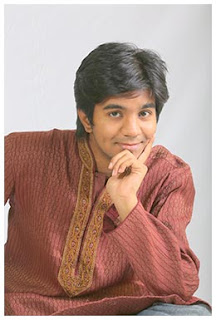 J. A. Jayanth is a child prodigy and is the grandson of one of Flute Mali's favourite disciples T S Sankaran. He started his training with his grandfather at the age of 5 and also reeived vocal training from his grandmother V. S. Sundari. He then took to the flute at the age of 7 and started to play the complex ragam-thanam-pallavi (RTP) segment in three speeds of what it would normally take years of practice to achieve. He was given an A grade ranking by AIR at the age of 21 and had performed in some of the most prestigious music festivals and concert venues in India and abroad. He had also given Jughalbhandis with several leading Hindustani musicians. Currently he is receiving advanced training in Carnatic music from the Carnatic vocal maestro Sanjay Subramanyam.
J. A. Jayanth is a child prodigy and is the grandson of one of Flute Mali's favourite disciples T S Sankaran. He started his training with his grandfather at the age of 5 and also reeived vocal training from his grandmother V. S. Sundari. He then took to the flute at the age of 7 and started to play the complex ragam-thanam-pallavi (RTP) segment in three speeds of what it would normally take years of practice to achieve. He was given an A grade ranking by AIR at the age of 21 and had performed in some of the most prestigious music festivals and concert venues in India and abroad. He had also given Jughalbhandis with several leading Hindustani musicians. Currently he is receiving advanced training in Carnatic music from the Carnatic vocal maestro Sanjay Subramanyam.
Thagarajan Ramani is one of the most accomplished Carnatic flautists in the world and is none other than the direct disciple and son of Carnatic flute maestro Dr N. Ramani. A mult-faceted musician, he is also proficient in the Carnatic violin, clarinet and khanjira and has given recitals in all these instruments alongside the Carnatic flute. He has passed with distinction and won the first prize in the Post-Graduate Diploma in Music "Sangeetha Alamkar (equivalent to an M.A. Music) from the Akhil Bharatiya Gandharva Mahavidyalaya, the premier Indian Institution of Music. He is an A-Top AIR and Doordarshan artiste and has given over 4000 concerts all over the world to date more than any other Carnatic flute concert artiste alive today including thousands of solo recitals and as an accomplished flautist for numerous dance arangetrams. He has accompanied Dr N. Ramani on numerous concerts in India and in major concert tours around the world. He has also been accompanied by legendary artistes such as Palghat Mani Iyer, M. S. Gopalakrishnan, Umayalpuram Sivaraman, T. N. Krishnan, Palghat Raghu among others, on the flute. An active performer till date, he has numerous disciples all over the world and frequently performs with Athul Kumar, his nephew, in concert tours in India and abroad.
The best sound in the flute is produced when it comes from the nabhi kamalam (navel)
Prapancham S. Balachandran is an ‘A-Top’ graded Carnatic flautist who hails from a family of illustrious musicians. His mother, Thanjavur V.Prema, is a reputed Carnatic vocalist. He underwent initial training in Carnatic music and flute from Sangeetha Bhooshanam Pozhakudi Sri P.V. Ganesa Iyer and Kattuputhur Smt T.R. Nagarathinam Ammal. He later underwent professional training in Flute under Sangeetha Kalanithi Padmasri Dr. N. Ramani for more than 35 years and has also performed alongside him in a number of concerts. Being one of the senior most disciples of Dr N. Ramani, he currently plays an active role in propagating the Carnatic Flute through teaching and lecture demonstrations. As a Guru, Shri Prapancham Balachandran’s unique teaching methods have proved so effective that some of his students are now graded artists of All India Radio. He is also a post graduate in Music and has presented numerous research papers and lecture demonstrations. Sri.Prapancham S. Balachandran is a State level Gold Medallist adjudged by none other than the legendary Dr.Semmangudi Sri.R.Srinivasa Iyer. He is also recipient of numerous awards and titles that include ‘Flute Mali Award’ by the Madras Music Academy, ‘Venugana Rathna’ by Sangeeta Mumurthigal Committee, ‘Mathura Murali Puraskar’ by Dr. Balamuralikrishna, Vipanchee and so on. He was conferred with the title ‘Pullankuhal Innisaivendu’ by Tamil Nadu Mangalavadya Isai Kalaigar Sangam, Chennai in the year 2001.
Much of what I learned as an artiste came from the numerous opportunities that Dr N Ramani, my guru gave me on his own concerts by asking me to play on-the spot
V. K. Sivakumar holds a Vadhya Visharadh Diploma in Flute from the Tamil Nadu Government Music College. He had a seven year privilege of learning directly under Flute maestro Dr.N Ramani and received his initiation in the Ramani school of flute playing from Sri. R Thyagarajan. He is a regular solo concert performer and has given concerts all over India and abroad. He is an accomplished accompanist for classical Bharatanatyam concerts. He has accompanied artistes such as the Dhananjayans and Chitra Visweswaran in their overseas classical concerts in USA, France, Germany and Malaysia. He has participated in the Vadya Vrinda conducted by premier Violinist A. Kanyakumari, and in Bharatanatyam programmes organised by the percussion wizard Shri Karaikudi Mani. He is also a highly recognised Carnatic vocal teacher. He has nearly two decades of teaching experience in both Carnatic flute and vocal music. He is a highly accomplished Carnatic flute teacher and has trained dozens of serious flute students in Singapore and in India including the rising flute star Vishweshwar in India to advanced levels in the strictest quality maintained by Dr N Ramani school of flute playing and provides relentless guidance and mentoring on proper Carnatic flute music and playing techniques. He is currently based in Singapore since Aug 2007 and is a Senior Tutor in the Singapore Indian Fine Arts Society. He has currently the largest number of Carnatic flute students in the Ramani school of music in Southeast Asia.
It is the only due to the blessings and guidance of my guru Dr N Ramani that I am able to impart the best of Dr N Ramani's music to my students
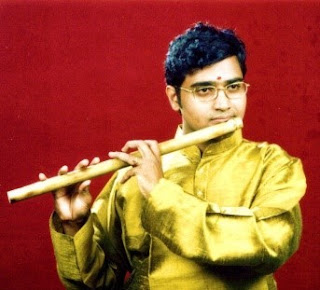 Trichy L. Saravanan is a B.A graduate in Indian Music from the University of Madras and a flute lecturer in Tamilnadu Govt. Music College, Chennai. He received his initial training from the direct disciple of Flute Mali K. S. Narayan and then received ten years intensive training with the violin maestro Nagai Muralidharan before joining Dr N. Ramani for advanced training in Carnatic flute. In his career, he has bagged the first prize in the All-India-Radio Flute Competition, received the gold medal in the Calcutta Youth Festival, the prestigious Senior Flautist award from the Chennai Music Academy, the Senior Fellowship from the Dept. of Culture, Govt of India for research on the Carnatic flute and several awards from music sabhas all over India including the Yuvakalabharathy from Bharat Kalachar. He is both an accomplished soloist and accompanist and has also accompanied Padma Vibushan Dr. M. Balamuralikrishna, and guru Padmashri Dr. N. Ramani on world tours. His recitals have won him praises from the likes of Bharat Ratna M. S. Subbulakshmi, Odissi exponent Padma Vibhushan Sonal Man Singh and etc. He has given flute-santoor and flute-sitar recitals with renowned artistes of India. He has also single-handedly scored music to the poetry of Bharat Ratna Dr. A. P. J. Abdul for a cultural concert in his presence during his visit to Singapore. He has been a full time Carnatic music teacher in Singapore teaching in the Global Indian International School since 2007.
Trichy L. Saravanan is a B.A graduate in Indian Music from the University of Madras and a flute lecturer in Tamilnadu Govt. Music College, Chennai. He received his initial training from the direct disciple of Flute Mali K. S. Narayan and then received ten years intensive training with the violin maestro Nagai Muralidharan before joining Dr N. Ramani for advanced training in Carnatic flute. In his career, he has bagged the first prize in the All-India-Radio Flute Competition, received the gold medal in the Calcutta Youth Festival, the prestigious Senior Flautist award from the Chennai Music Academy, the Senior Fellowship from the Dept. of Culture, Govt of India for research on the Carnatic flute and several awards from music sabhas all over India including the Yuvakalabharathy from Bharat Kalachar. He is both an accomplished soloist and accompanist and has also accompanied Padma Vibushan Dr. M. Balamuralikrishna, and guru Padmashri Dr. N. Ramani on world tours. His recitals have won him praises from the likes of Bharat Ratna M. S. Subbulakshmi, Odissi exponent Padma Vibhushan Sonal Man Singh and etc. He has given flute-santoor and flute-sitar recitals with renowned artistes of India. He has also single-handedly scored music to the poetry of Bharat Ratna Dr. A. P. J. Abdul for a cultural concert in his presence during his visit to Singapore. He has been a full time Carnatic music teacher in Singapore teaching in the Global Indian International School since 2007. The early foundation that I received from the Mali school of music through my guru Sri K. S. Narayan helped me to absorb the intricacies of Dr N. Ramani's music in the later part of my musical education.

 22:47
22:47
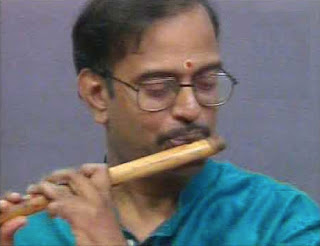





Very good collection of short biographies of all legends of flute. I could find write up on Dr N Ramani's students and sin by not if Dr N Ramani himself. I believe this write-up would not be complete without his biography.
ReplyDeleteGot to know about many legendary flutists at one place.Thank you for this blog !
ReplyDeleteI am Vidwan B.Shankara Rao'son.I would like to bring to your notice,a small mistake in his profile that you have given.You have mentioned that he served as a "postman" in the Dept.of posts,which is not correct.He served as a "Post Master".You may also add one more coveted which he received in Oct'2017.He was awarded the "Vayosresth Samman" by President of India,Shri.Ramnath Kovind for his dedicated and distinguished service in the field of Carnatic Music.Please edit the profile suitably and republish.
ReplyDeleteRegards
Srinivas B.S.
Namaste. Thanks for publishing this very interesting blog about noted flautists of Carnatic Music. In case of Vidwan B.Shankar Rao, he was a Post Master in the Indian Post and not a Postman. In 2017 he was conferred the 'Vayoshreshta Sammaan' award by President of India
ReplyDeleteVery nice.thanks.
ReplyDelete